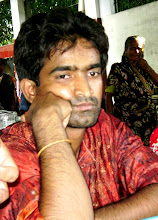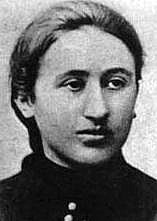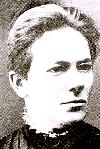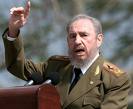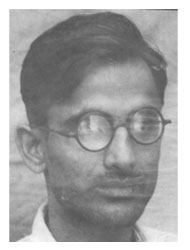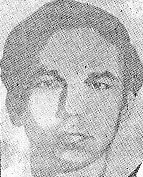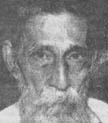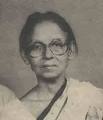Since the assassination of Mujibur Rahman in 1975 and the re-birth of the Islamist student body Islami Chhatra Shibir (ICS) in February 1977 Bangladesh continues to face a serious threat to democracy.
A wider network of various Islamist organizations in Bangladesh like, Jamaat-e-Islami (JEI), Islami Oikyo Jote(IOJ) and Islami Chhatra Shibir (ICS) transformed Bangladesh into an emerging terrorist State. Of them the ICS, the student wing of the Jamaat-e-Islami launched a protracted movement ever since its re-birth to turn the entire socio-political system of the country from democratic secular character to a Taliban type Islamist regime in Bangladesh. Instilling jehadi spirit of Islam among the students in different universities and madrassas it inspired the students for acquiring Islamic knowledge and prepared them for their jihadi mission. Its ideology of political Islam, which was opposed to the forces of modernization, secularism and democracy, helped it in getting the moral and material support from most of the radical Islamist groups including the terrorist outfits all over the world. Thriving on transforming the shape of the education and the socio-cultural environment of Bangladesh, the ICS is today known as strongest militant student's organization in the universities of Chittagong, Dhaka, Rajshahi and Jahangirnagar. As a dominant Islamist outfit in Khulna and Sylhet, it is an uncontested radical group within the vast madrassa (religious seminary) structure in Bangladesh.
History of Islam-based student politics in Bangladesh dates back to the period of Pakistan movement in early forties of last century. However, migration of Maulana Maududi, the founder of the JEI to Pakistan provided a new vigor to it. The JEI formed its student wing Islami Jamaat-e-Talaba (‘Talaba’ meaning students) in Lahore on 23 December 1947. A full-fledged East Pakistan wing of the organization was however, formed in 1955 with its Bengali name Islami Chhatra Sangha. Initially, the Sangha had a modest beginning but pegged with the religious ideologies of the JEI it could gradually muster clout within the mainstream student politics in Pakistan. With its area of influence among the madrassa students it could also manage its linkage with Jamiat-e-Talabae-Arabia that played a crucial role in galvanizing the Islamic student movement. Managing financial resource and guidance from internationally known Islamist student organizations, it started confrontational politics with the mainstream student bodies. The first major clash, in terms of action, between Islami Chhatra Sangh and the other student organizations surfaced in 1969, when it challenged the 11-point demands of the latter for self-rule from Pakistan. The violent clash between the two opposing student camps left a prominent Chhatra Sangha leader killed.
Ironically, in 1971 Liberation War when the largest group of East Pakistan civil society was up in arms against Pakistan, the JEI and the Chhatra Sangh worked as collaborators of Pakistan army. The central committee of the Islami Chhatra Shangha became the de facto committee of the infamous Al-Badar that was involved in the acts of genocide and the killing of a large number of intellectuals, who were supporting the Liberation War. Most of the members of the highest decision making body of Jamaat-e-Islami — Majlis-e-Shura — were the activists of Al-Badr central and district committees. The founding president of the Islami Chhatra Shibir, Mir Kasem Ali, and the following two presidents — Mohammad Kamruzzaman and Abdul Zahir Muhammad Abu Neser — were all documented office bearers of the Al-Badr. The present Ameer of Jamaat-e-Islami, Matiur Rahman Nizami was industry minister in the cabinet of Khalida Zia (2001 to 2006). Many other former members of the Shangha, who later went into Jamaat, were responsible for ‘crimes against humanity’ according to documents at the Bangladesh Liberation War Museum (The New Age/September, 13th, 2006 by Mahfuz) .
Liberation of Bangladesh in 1971, as an independent democratic and secular Bengali nation was a major setback for the forces of Islamism. The Mujib Government imposed a ban on all the Islamist organizations including Islamic Chhatra Sangh due to their collaboration with Pakistan army. But the JEI re-grouped its cadres under different names and continued educating the people against democracy on the plea that it was anti-Islam.
The unfortunate assassination of Mujib in August 1975 was a God sent opportunity for the Islamists to revive their activities particularly when on May 4, 1976 Ziaur Rahman, the then Military ruler withdrew the ban imposed on religion-based political parties and their activities. Accordingly, a few leaders of the pre-liberation Islami Chhatra Sangh assembled at Dhaka on February 4, 1977 and revived the organization with a new name of Islami Chhatra Shibir ( ICS). Carrying forward its pre-liberation tainted legacy, the Islami Chhatra Shibir started a new journey with a mission "to satisfy Allah through the rearrangement of the total life of human being in the way given by Allah and shown by the prophet". Taking cue from its parent party, the JEI and to achieve its significant goal for establishing Afghanistan-Taliban type regime in Bangladesh, ICS made deep dent in the student and youth politics of the country.
Replacement of the word secularism with "absolute trust and faith in Almighty Allah" in constitution through a decree on April 22, 1977 and return of the JEI same year in a conference on May 25-27 encouraged the ICS to revive religious-conservative student politics. Revival of the pre-liberation line that was contrary to the basic governing political principles of Bengali nationalism, socialism and secularism of both the mainstream right and left student bodies in the campus led to violent confrontational politics.
In 1978 the ICS aggressively struggled against 'Aparajeyo Bangla' erected at Dhaka University in remembrance of the Liberation War and its martyrs. Though the mainstream student political organizations and the general progressive attitude of the university's students thwarted the attempts of the ICS cadres, the latter did collect quite a large number of signatures. In a last ditch effort, they tried to sabotage the construction by removing a few bricks from the base of the statue, under-construction. This failed attempt was however, a reflection of 'real tectonic clash of ideologies' between theocratic political Islam and secular democratic politics. Although the new nation of Bangladesh had pushed the Islamist students' mass movement of 1969 into the backburners of pre-Liberation history, re-emergence of ICS barely within a decade was stepping-stones to turn the direction of the country towards a failing State.
In 1982 students' Union election in Chittagaon University the ICS won the entire panel, which legitimized its official recognition. This achievement helped it to expand its influence in other universities like Dhaka and Rajshahi . However, it got a rude shock in February 1983 when it was celebrating its founding anniversary at Ramna Battmul in Dhaka. The Chhatra Sangram Parishad, an alliance of fourteen none-Islamist students' organizations, which had launched agitation against the martial law hurled a grenade on the procession of the ICS, which injured two of its members. The incident trashed the 'musclemen on campus' image of the ICS and therefore, it made a tactical retreat by maintaining low profile with high return policy. It launched a systematic membership recruitment drive to increase its strength and did not bring out any procession in Dhaka University campus for many years.
Military ruler General Ershad's constitutional amendment in 1988 to incorporate Islam as state religion emboldened the ICS to take revenge of 1983 humiliation by staging a violent assault on the hostel of Jahangirnagar University and killing two of the students of the rival camp. But the event became counter productive and stimulated unity among the non-ICS students, who also joined the all-party joint movement against the military regime of Ershad.
With the end of army rule in 1990 the members of 'Paribesh Parishad', the university’s council of top officials and all student bodies, which oversee the campus atmosphere, took a unanimous decision not to allow any communal activities on the campus. This decision of 'Paribesh Parishad' made the ICS cadres restive and provoked them for another clash with the Chhatra Dal - Chhatra League combine on January 14, 1993, which resulted in the death of a student. Use of crude weapons, including bows-arrows in the clash turned out to be one of the most violent days in the history of student politics in Bangladesh.
With a strategy to make a deep in road in student community, the ICS started coaching centers for the admission tests for job-oriented educational courses and tapped a sizeable number of intelligent students even before they entered universities. Teaching on aggressive and vengeful values masquerading as Islamic values also formed a part in the coaching centers. Some reports suggested that Shibir leaders like Shishir Monir, the president of the organization’s Dhaka University unit; Badra Alam Didar, the president of Chittagong University unit; Abdul Hannan, the president of Islamic University unit; Sayed Fayjul Khalil, and Mahbubur Rahman, former presidents of Dhaka Medical College unit were the directors of these coaching centers. Providing financial and subsidized housing assistance to the needy students this grand strategy of the ICS not only increased its popularity among the students but also improved its fund position. According to some news papers report "the annual income of the ICS from coaching centers was Tk 25 crores".
The landslide victory of four-party alliance and formation of government led by Khalida Zia of BNP in October 2001with JEI and IOJ as cabinet partners boosted the morale of the ICS. Since then the record of violence in the share of the ICS increased day by day. Under the patronage of the JEI the government, it succeeded in re-asserting its position in the cabinet. In December 2002, re-appearance of banners and posters of Shibir was followed by a declaration of its Dhaka University president that no meeting of the 'Paribesh Parishad' could be held without it during the tenure of the present four-party alliance government. This aggressive design was a significant move, which helped in the fading away of the undeclared moratorium on it. By infiltrating its cadres in different government and social institutions and developing effectual infrastructure for organizing training, clandestine camps and shelters for the various Islamist terrorist outfits in the country ICS gradually emerged as a strong religio-political force in the campus. With a significant number of former Shibir leaders getting teaching positions at universities like Dhaka, Chittagong, Rajshahi, Shahjalal and Khulna, the organization not only succeeded in building its stronghold among the students but could also keep the growth of combined progressive students’ movements under check.
Although, a larger group of general students remained disassociated with Shibir, revival of its 'muscle power' image engulfed the campus with a cloud of intellectual vacuum. Progressive organs like public universities getting infected by the encroachment from ICS camp led to the green growth of a number of revolutionary Islamist organizations. The situation helped the ISI to help the members of Taliban and Al-Qaeda for setting up their camps in Bangladesh. "Twenty Al-Qaeda terrorists holding Pakistani passports were arrested from a mosque in Khulna by the Bangladesh police and released later as early as January 2002" (Insurgency in North- East India -The Role of Bangladesh - Dipankar Sengupta/Sudhir Kumar Singh, Authors press, New Delhi, 2004, Page 245). Thus, partnership of the JEI in the four-party alliance became instrumental in the growth of Islamist militancy in Bangladesh. It also worked as a shield for the ICS in its secret link with various terrorist organizations operating in the country.
Maulana Mirza Nurul Huq, Convener of the Bangladesh Madrassa Teachers Association (BMTA) in a press conference said, "the Jamaat-e-Islami and its student front Islami Chhatra Shibir are involved in terrorist activities in educational institutions using the name of Islam".
Addressing a seminar on "The Rise of Militancy" (Dhaka, October 2005) Professor Abu Sayeed said, " The Jamaat-e-Islami and Shibir (ICS) are providing arms training to the militants through 7000 madrasas in the country as part of strengthening their net work". He further said, "The Jamaat-e-Islami is the mother organization of 58 militant bodies operating in Bangladesh" (New Nation -Bangladesh). Some of the newspapers both in Bangladesh and India also reported that a sizeable number of madrasas were “singularly dedicated to propagate fundamentalist ideology and in many cases providing arms training to the students".
Media has routinely highlighted the link of ICS with all the terrorist outfits like Jamaat-ul-Mujaheedin Bangladesh (JMB), Jagrata Muslim Janata Bangladesh (JMJB), Ahle Hadith Andolan Bangladesh (AHAB) and Harkat-ul-Jihad-al-Islami Bangladesh (HUJIB) In the wake of the bomb blasts in 2005, 'The Daily Star', a leading daily of Bangladesh in its investigation found "most of the JMB and JMJB leaders were in the past members of the Islami Chhatra Shibir". Similar reports in some other newspapers in Bangladesh also corroborated that most of the leading members of over two dozen Islamist militant organizations were sometimes associated with the JEI or its student front the ICS.
Media has routinely highlighted the link of ICS with all the terrorist outfits like Jamaat-ul-Mujaheedin Bangladesh (JMB), Jagrata Muslim Janata Bangladesh (JMJB), Ahle Hadith Andolan Bangladesh (AHAB) and Harkat-ul-Jihad-al-Islami Bangladesh (HUJIB) In the wake of the bomb blasts in 2005, 'The Daily Star', a leading daily of Bangladesh in its investigation found "most of the JMB and JMJB leaders were in the past members of the Islami Chhatra Shibir". Similar reports in some other newspapers in Bangladesh also corroborated that most of the leading members of over two dozen Islamist militant organizations were sometimes associated with the JEI or its student front the ICS.
"Tarique Rahman and several ex-BNP ministers directly patronized the outrageous operations of the JMB (Jama'atul Mujahideen Bangladesh) in Rajshahi with the full knowledge of former prime minister Khaleda Zia, revealed an extensive The Daily Star investigation that was corroborated by top government officials in the region"."(The Daily Star Bangladesh dated June 21, 2007).
With Nurul Islam Bulbul as Central President, Mohammed Nazrul Islam as Secretary General and other important leaders like Kamal Ahmed Sikder, A S M Faruq, Muhammad Mujibur Rahman Manju, Muhammad Raisul and A S M Ashraf Mahmud Uzzal, the Executive Council of the ICS is the highest decision-making body of the organisation. ICS with its eight-member central secretariat and 6 divisions namely Dhaka Division, Chittagong Division, Sylhet Division, Rajshahi Division, Khulna Division and Barisal Division and each division with several districts and other units under its jurisdiction is one of the largest Islamist student organizations in South Asia. Maintaining a close link with Student Islamic Movement of India (SIMI) and various other Islamist fundamentalist organizations of different countries ICS is also a member of International Islamic Federation of Student Organization (IIFSO) and World Assembly of Muslim Youth (WAMY). Its former President Dr. S A M Taher was also the Secretary General of IIFSO. Media reports suggest that the ICS indoctrinated the fanatic youths in Bangladesh and sent them to Pakistan and Afghanistan during the reign of the Taliban and various other terrorist outfits operating in South Asia. With the help of the Inter Services Intelligence (ISI) of Pakistan it also supported to the subversive agenda of the various terrorist groups in many regions of India.
Despite the repeated caution by the media against the growing menace of the ICS none of the successive governments in Bangladesh took any action to put any check in its growth. Even the claim of the present caretaker government that it has taken effective steps to curb Islamist terrorism also sounds hollow as it is hardly found serious in this regard.
